Credits:Biovision-Infonet

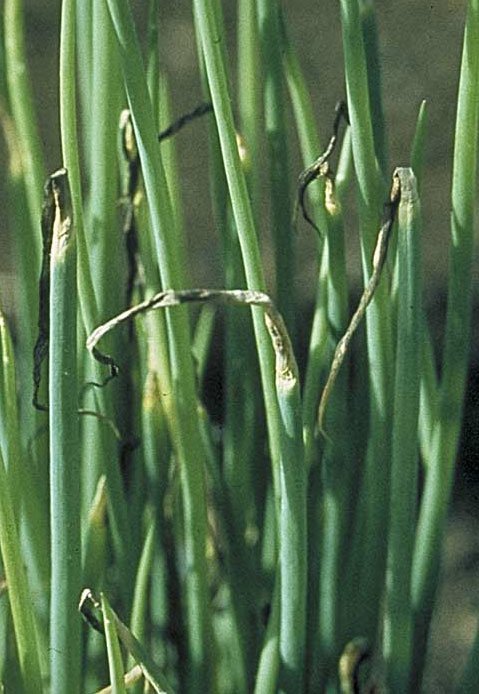
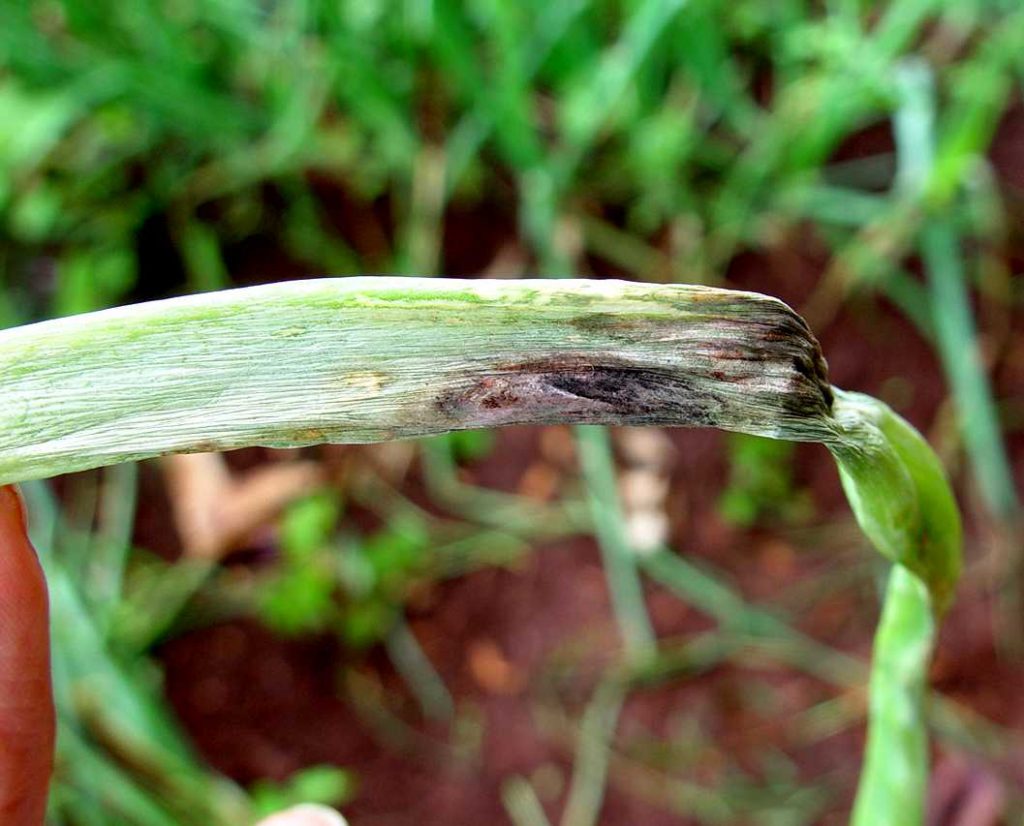
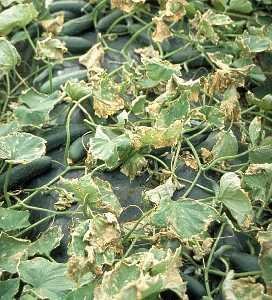
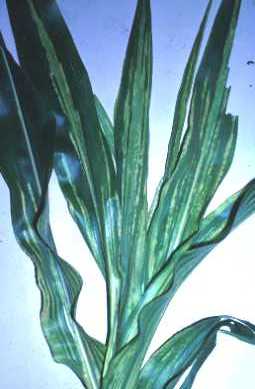
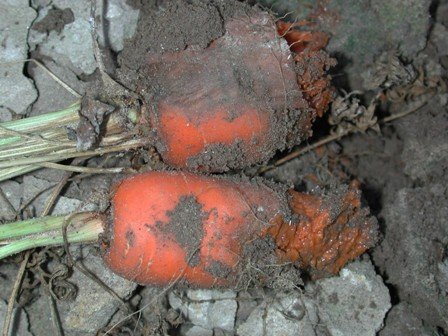
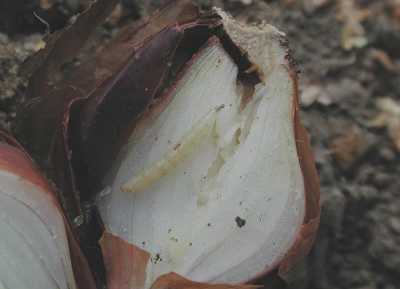
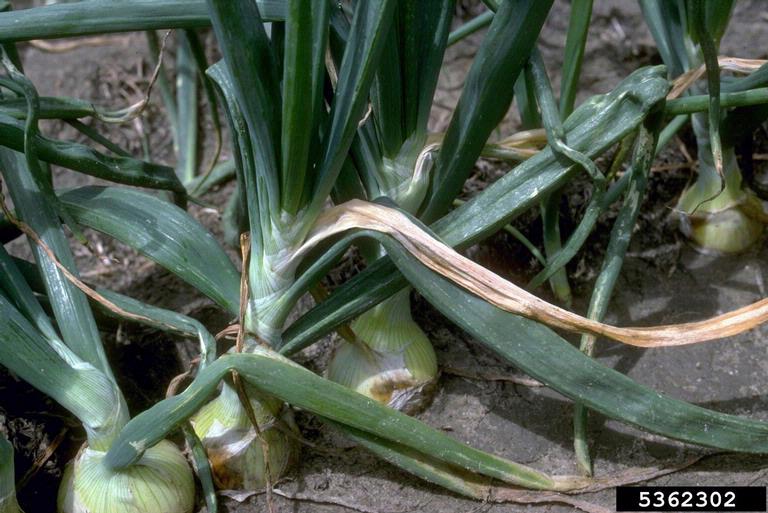
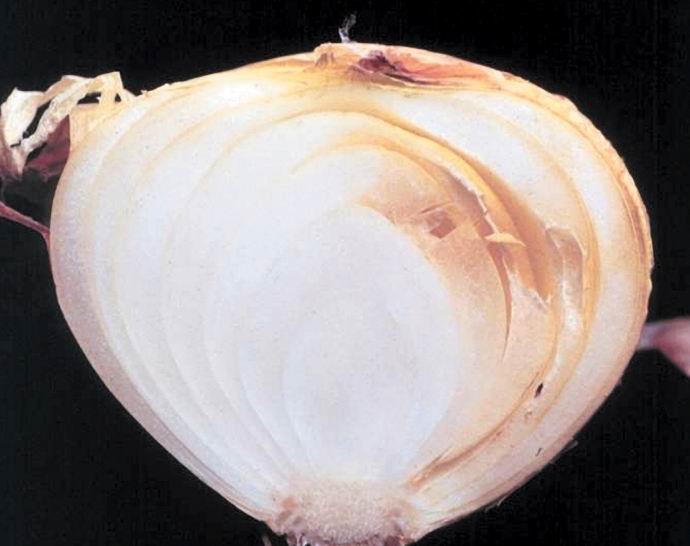
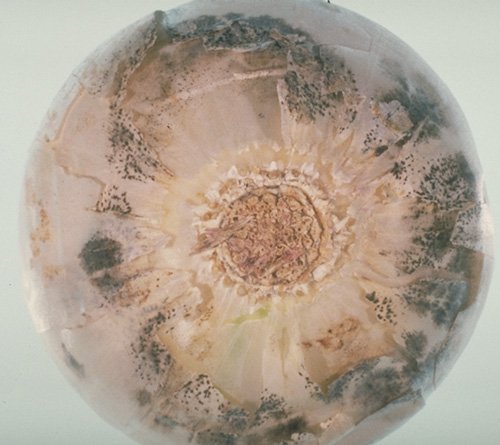
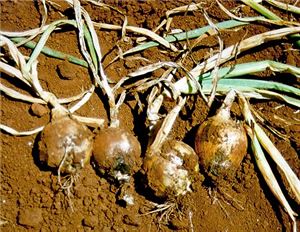


Portal for the icow Apps content
Credits:Biovision-Infonet













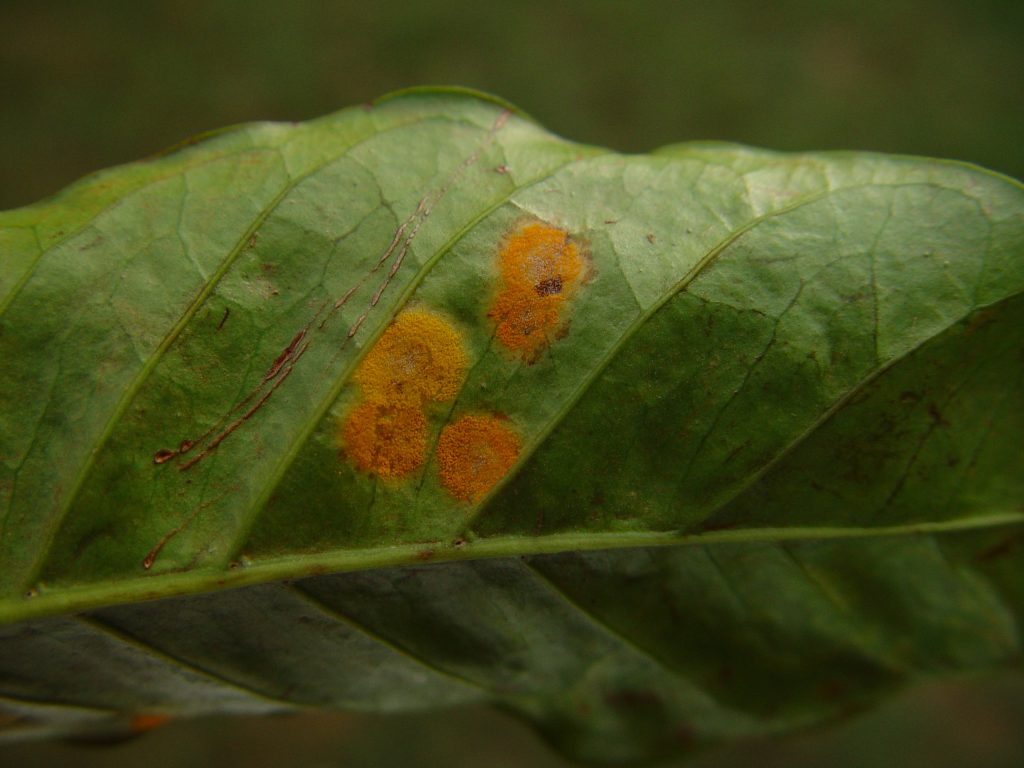

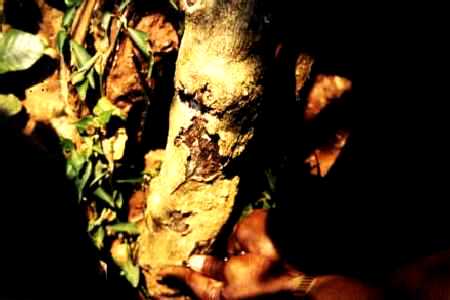
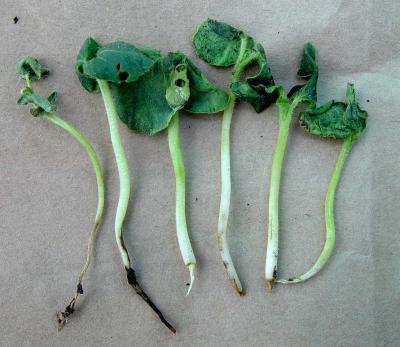
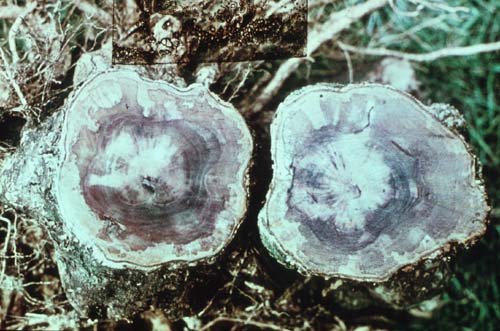
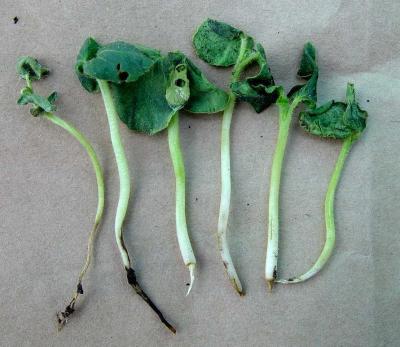
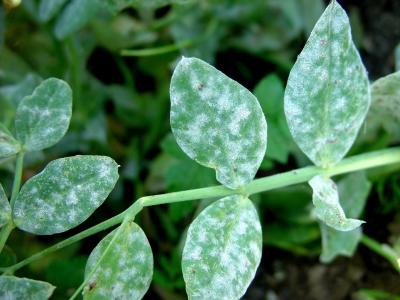

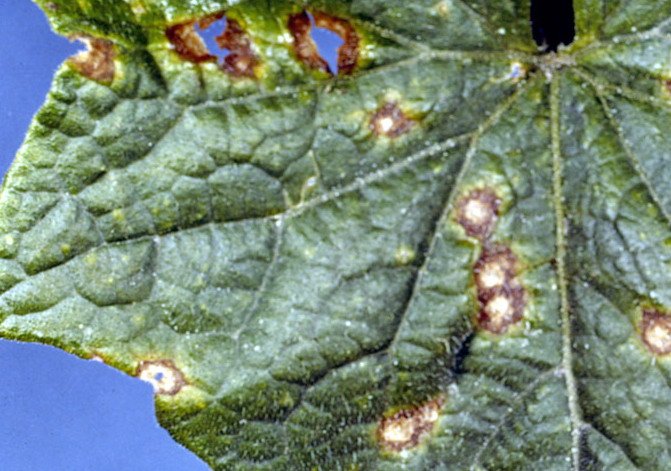

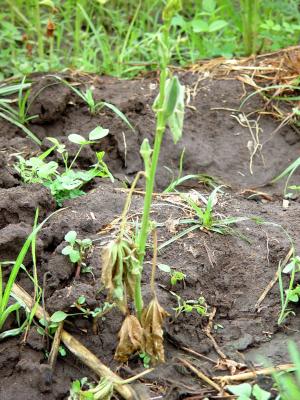
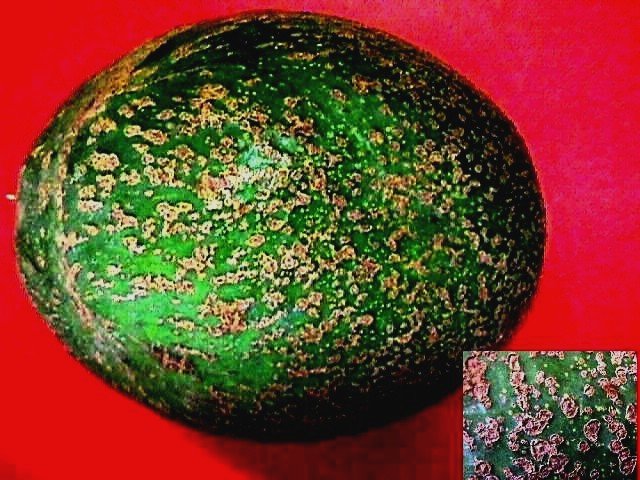
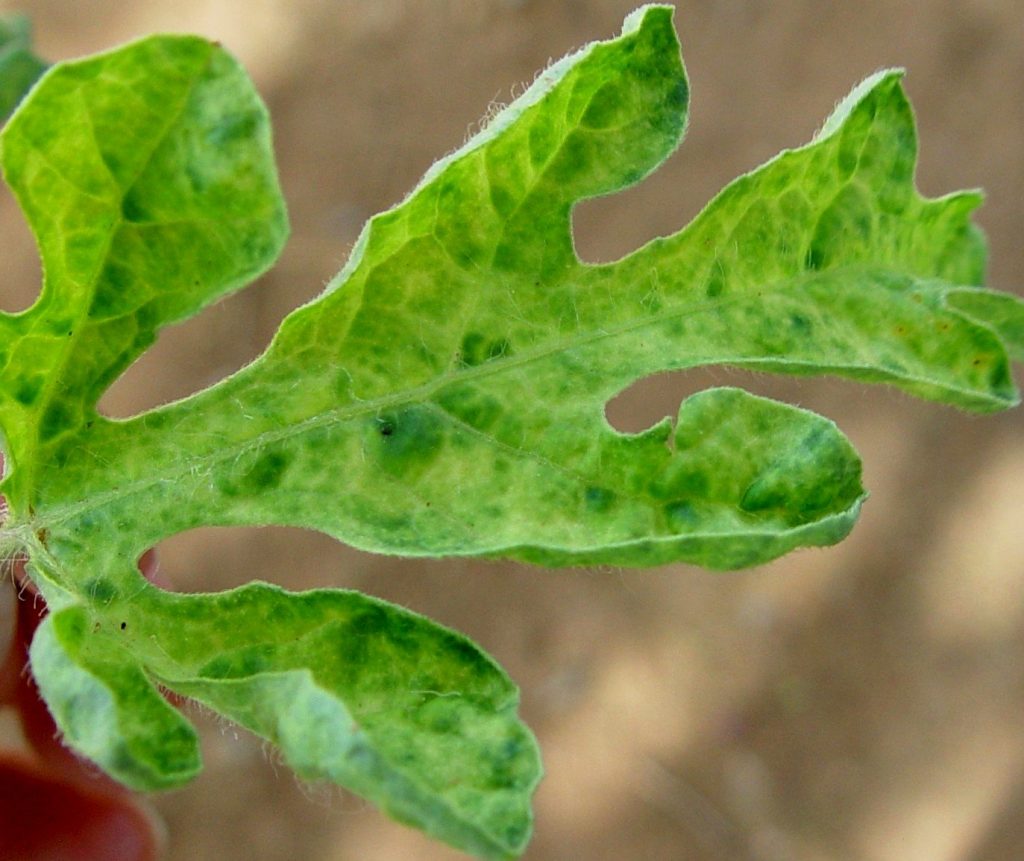
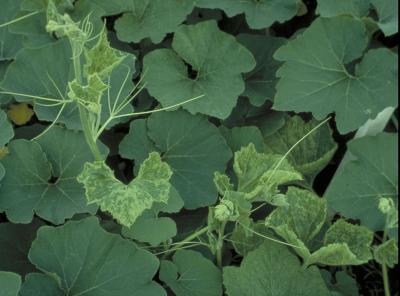
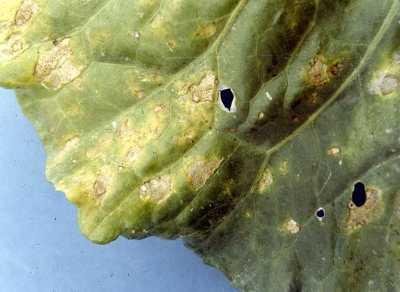
Credits: Biovision-Infonet
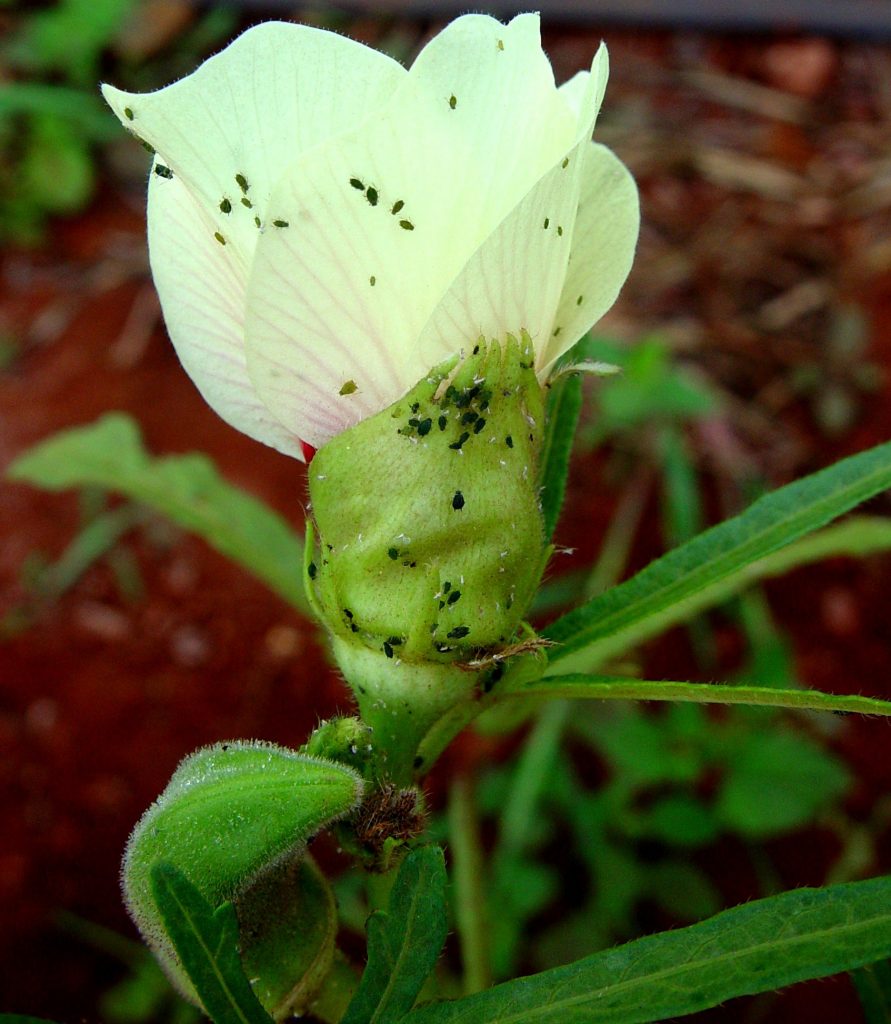
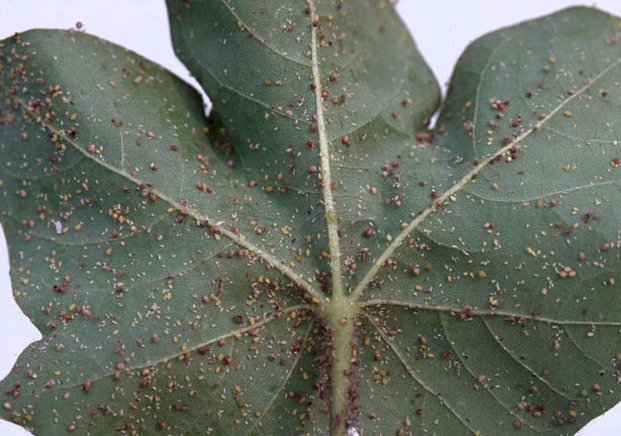
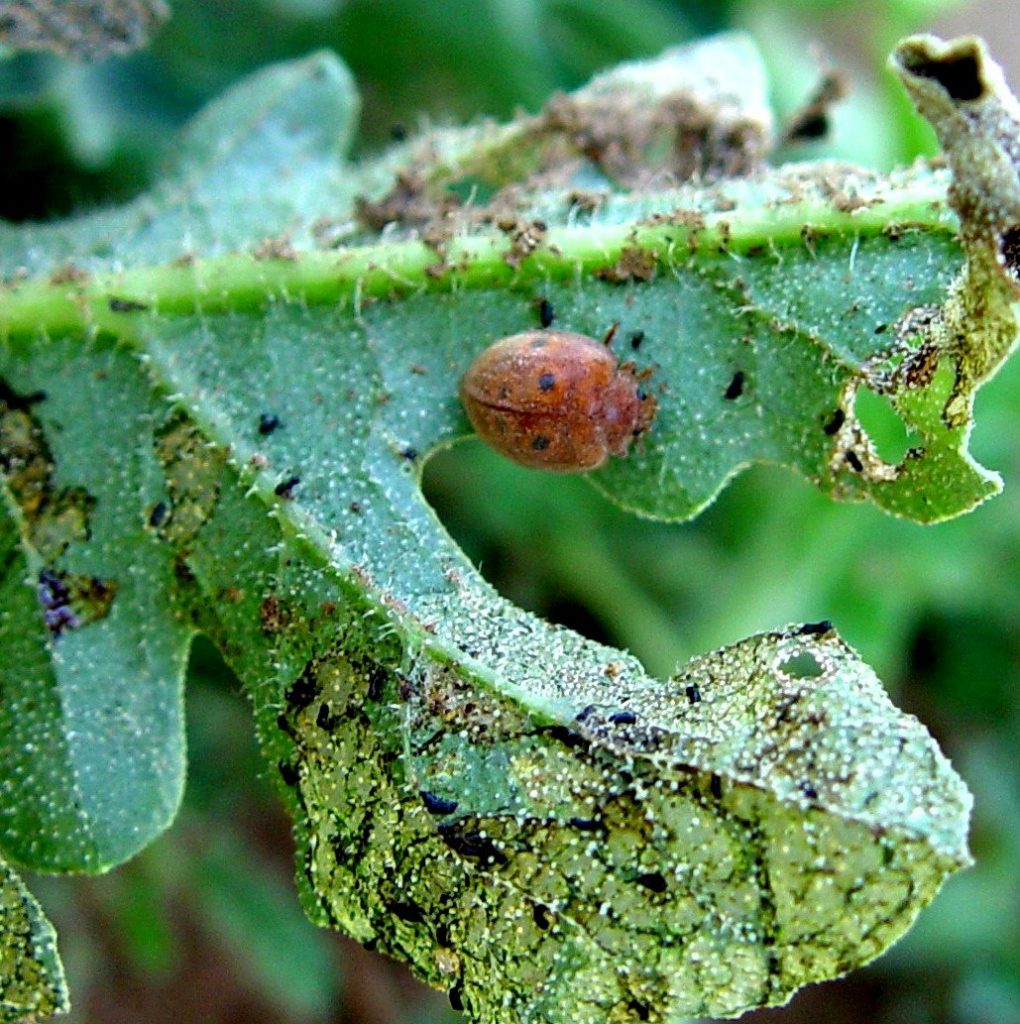
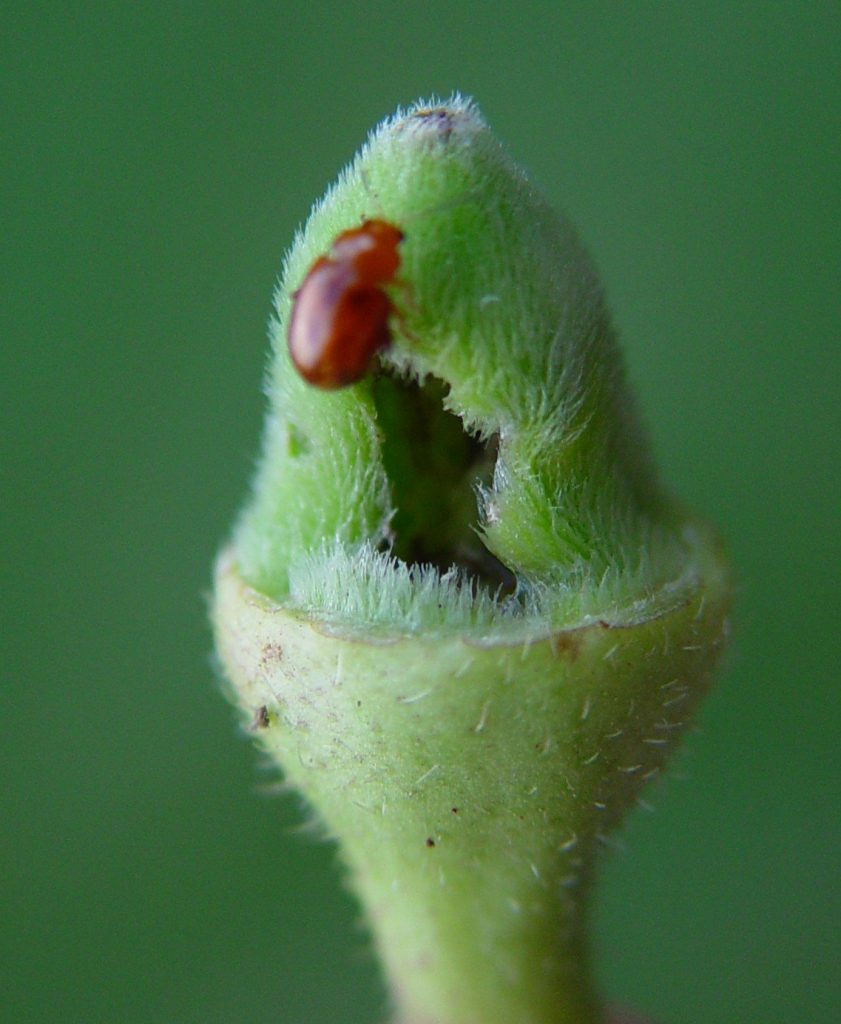
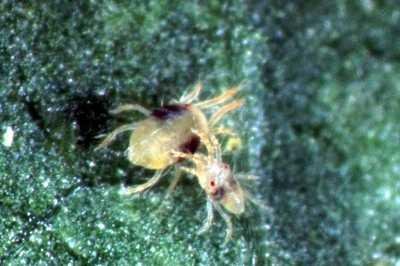
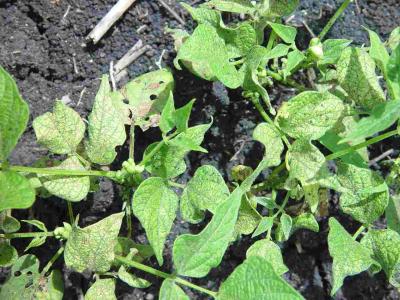
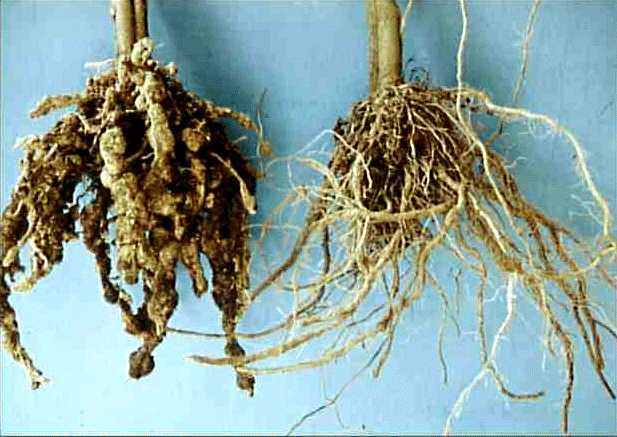
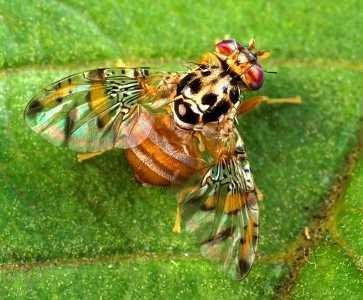
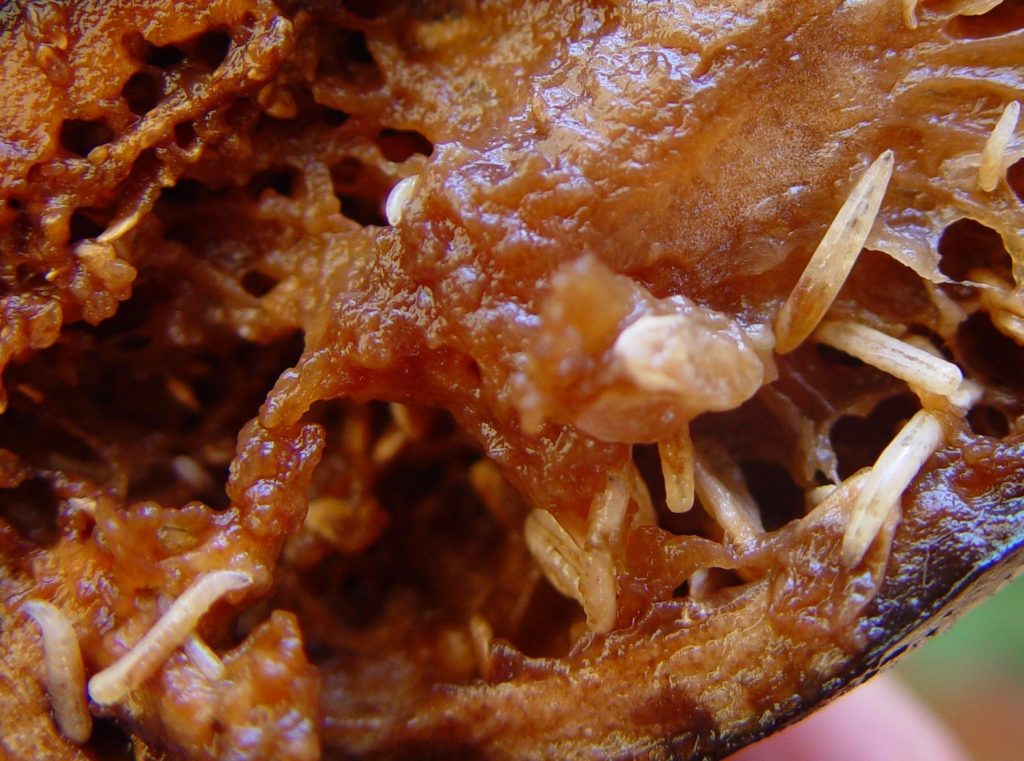
Credits: Biovision-Infonet
There are many different aspects to herd management. Improving your herd needs good planning and focus on what needs to be achieved. The following table gives some data on different goat breeds that are useful to keep in mind when planning herd improvement. Some breeds have higher twinning rates than others (Prolificacy: Anything above 1.00 means there is a twin or triplets – the higher the number the better chance.) It can be seen that Toggenburg and Boer goats have the highest chances of twinning (1.80-2.00 ) In below table it is assumed that all goats are fed properly. Poor feeding affects fertility very negatively, and increases abortion rates and kidding rates as well as survival if kids.
| Breed | Fertility | Fertility | Fertility | Litter size ) | Birth weight (kg) | Weaning weight (kg) |
| Age at first mating (day) | Kidding interval (days) | Kidding rate (%) | Number of kids | |||
| Angora | 1.00 | 2.4-3.4 | 18.1 | |||
| Boer | 1.20-1.80 | |||||
| E.A. goat | 458-655 | 399+-256 | 65 | 0.95-1.10 | 3.0 | 6.3 |
| Galla | 425-598 | 411+- 189 | 72 | 1.03 | 3.6 | 10.3 |
| Kenya Alpine | 135-504 | 392+-164 | 78 | 1.44 | 3.1 | 16.3 |
| Saaneen | 291 | 81 | 1.13-1.50 | 3.1 | 12.9 | |
| Toggenburg | 547-572 | 302+-117 | 86 | 1.80-2.00 | 3.3 | 19.0 |
(c) Andrew G. Marete
In all breeds, fertility is affected by level of nutrition, the age at first mating and kidding interval and it has been reported that kitting interval in local breeds is shorter than in exotic dairy breeds.
After determining the breed and sex of the goat the next useful step is to examine the teeth. Breakdown of the teeth is a very common reason for culling small stock under range management, as poor quality teeth will affect the ability to browse and feed well.
The Galla goats have very strong teeth well able to keep them healthy during a long life. Worn teeth indicate old age. Goats which do not have healthy teeth cannot feed properly, and will not gain weight at the expected rates. Neither will they be good breeding stock. Make sure the lower teeth meet evenly with the upper teeth.
Table: Ageing goats by their teeth
| Age | Teeth |
| Under 1 year old | milk teeth |
| 1 – 1 1/2 years old | 2 teeth |
| 2 years old | 4 teeth |
| 2 1/2 years old | 6 teeth |
| 1 1/2 – 3 years old | Full mouth |
| Over 3 years old | Worn teeth |
| Aged | Gumming |
(c) Andrew G. Marete
In all breeds, the best predictor of a buck’s fertility is testicular weight as indicated by scrotal circumference. Although sperm is produced all year, ejaculate volume increases between January to March and June to October due mainly to the changing day length (photoperiod).
Reproduction in Bucks
Puberty can be defined as the time when spermatozoa are in the ejaculate,the age will be 3 to 5 months for bucks. Sexual activity in bucks commences with the formation of spermatozoa and the fluids which together comprise semen. The sperms are stored in the epididymis where they can remain fertile for up to 40 days and retain their motility up to about 60 days. Beyond this time they disintegrate and are absorbed

Nutrition has a large effect on a buck’s libido, semen volume, sperm count per ejaculate, and percentage of live sperm, sperm motility, semen fructose concentration and percentage of abnormal spermatozoa. In a similar way nutrition levels can have dramatic effects of does. A sudden availability of good feed for example can induce oestrus and ovulation rates and an increase in multiple births. Conversely severe under nutrition can cause the cessation of all reproductive processes. However, in Angora goats, the biggest factor influencing multiple births is pre-breeding nutrition and flushing does before breeding.
Do not use bucks with one or no testicles for breeding. Also those with swollen testicles should be refrained from breeding. A breedingbuck should have 2-8 hard teeth. Breeding bucks should have superior qualities, such as body size and muscle conformation and for Saanen breeds they should have horns. A noisy buck is said to be a useful buck.
Buck preparation for breeding season
A breeding buck needs good quality roughage as well as 0.45 – 0.9 kg concentrate (depending on size of buck) to keep him healthy. Feeding should be enough to keep its weight steady but not too fat. A fat buck will not be active. Give more feed two months before the buck goes to serve the does. This will improve the buck’s sperm and make it more active. When a buck is being used a lot to serve does, it should be separate from other goats for about 2-3 hrs per day to allow time to eat as well as serve the does. Lots of fresh and clean water needed all the time must be able to lick the mineral at any time.
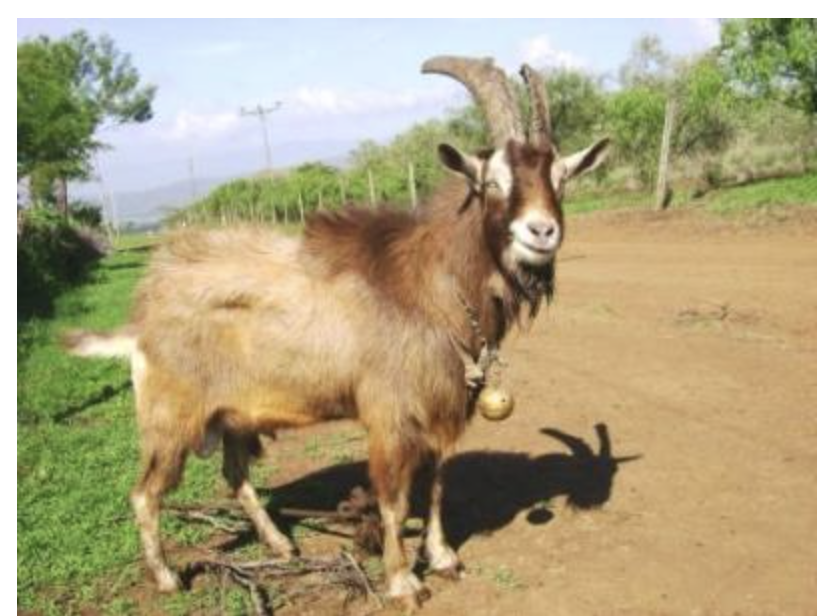
The scrotum
Scrotal circumference should be at least 25-28 cm at 45 kg of body weight.
Scrotal circumference predicts the fertility of daughters, so you want a buck with a large scrotum.
Make sure both sides of the scrotum are the same size, are smooth and lump-free and are well attached.
The scrotum should not have two separate oblong chambers, but instead, one chamber with an indentation between the two areas.

1 full grown buck can service 50 does. He should not service his own daughters, grand daughters, mother, grandmother and sisters.
A buck will coat his front legs and beard with urine. He will do anything in his power to get to the does in heat, including breaking down fences. He can be dangerous during this period, so don’t ever turn your back on him, and especially if you are trying to remove does from his pen. It is best to put does on a long leash before putting them in his pen. That way you can pull them back out of the pen without having to go into the pen to get them.
Note: DO NOT “play” with young bucks. If you do, they may well become a nuisance when they are mature. A mature adult can weigh up to 80 kgs, may have large horns and could be a liability if he grows up thinking humans are “play things”.
The udder should be soft to the touch with two functional teats. Any hardness is a sign the doe has had previous problems most likely with mastitis. A doe with a damaged udder may not be able to produce enough milk to feed her young ones. Look for good strong legs. Weak or bent hind legs will make the goat unable to feed on good browse. Blind females will not be able to find good food in a range style management.
Desirable Characteristics in the Doe
1) She should be a large animal – not related to the breeding buck, excellent on conformation with a well developed body which displays the particular breed characteristics
2) For meat goats the rectangular conformation of the “blocky” meat animal should be apparent. The dairy animal should display the wedge shaped conformation typical of a good dairy animal.
3) She should be a twin (in order to pass on the twin trait)
4) She should be of a good temperament, particularly for dairy goats. Docility and good mothering ability are good features.
5) She should be a good milker; for dairy goats records of performance of the dam can give information about milking ability.
Sex Ratio: The sex ratio gives an indication of the proportion of males to females born for individual breeds of goats. The ratio is weighted more in favour of males than females for horned goats. The reverse is the case for polled breeds (such as Saanen). In the case of Saanen however, abnormal ratios occur with the production of intersexes or hermaphrodites. This is due to the presence of a dominant gene which prevents horn growth and is closely associated with abnormal development in polled does. Males, whether polled or horned, are normal. In view of this it is important to mate only polled females to horned males or polled males to horned females to reduce the production of polled females.
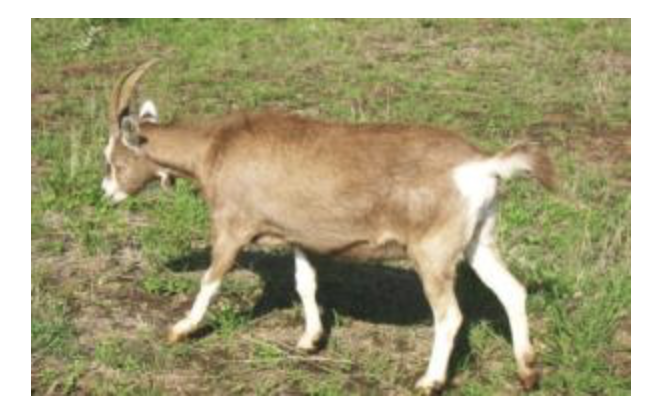
1. Pregnant dry does should be fed so as to rebuild any lost body reserves, provide for the developing fetus and to build some reserve fat before kidding. Free access to good pasture and roughage plus concentrates at 0.2-0.7 kg per day, depending on condition of doe. Yearling does should be fed enough for maintenance and growth but not enough to fatten them i.e., 0.2 – 0.7 kg per day should be sufficient to obtain the desired growth rate. Browse, good pasture and high quality hay and a place to exercise are desirable.2. As pregnancy progresses, the nutritional demands of the female increase. If the goat is heavily pregnant towards the end of the dry season, 4 things will happen at the same time:
Stress and rough handling during this period can cause the female to abort, and part of the stress is the poor quality of the feed available. Therefore it is important to look for good cheap feed for these pregnant does. This is a bad time to transport goats (to livestock shows or for sale) as the stress can cause abortion.
If possible the pregnant does should also have access to mineral salt blocks, shade and plenty clean drinking water.
Age at first mating: Females should have at least two hard teeth (18 months of age) before being mated. If mated younger with too low body weight, this may result in aborting or inability to feed and care for the kid(s). As a result of such early mating, the female’s body growth will be stunted, and the kids will grow poorly and be of little value.
Mating usually takes place during the rainy seasons, ensuring enough feed for the young ones during the next rainy season.
Gestation period: 148-160 days.
Once mating has taken place the doe should be observed for 21 days and again at 42 days to check for return of heat. After 42 days she should be considered pregnant (in kid.)
The management of the breeding doe is related to 3 separate physiological stages.1. The dry period (weaning to mating) – approximately 3 months
2. The pregnancy period (mating to kidding) – approximately 5 months
3. The lactation period (kidding to weaning) – until 2 months into next pregnancy
If a doe does not dry off naturally the farmer should, at approximately 2 months into next pregnancy, strip the goat of her milk in the evening and apply 1 tube to each teat of “Dry Cow” – (in organic goat this is not allowed: no preventive use of antibiotics). The goat should not be milked again, even if the udder appears to fill. She will now be ‘dried off’ in preparation for her next delivery.
A dairy goat’s milk production will drop at approximately 8 weeks after conception and, by approximately 14 weeks, she may dry herself off.
The doe is least productive during the dry period. At this time the doe recovers from the stresses of the previous pregnancy and lactation. The endocrine system is readjusting to the next service period and pregnancy.
Table: Average daily mineral and trace element requirements for different categories of goat
| Category | DM | Ca | P | Mg | Na | K | Cl | S | Cu | Co | Mo | J | Zn | Mn | Fe | Se |
| Kg | g | g | g | g | g | g | g | mg | mg | mg | mg | mg | mg | mg | mg | |
| young, pregnant | 1.6 | 3.6 | 3 | 1.6 | 0.6 | 7 | 1 | 2.4 | 18.6 | 0.16 | 0.16 | 0.5 | 26.7 | 72 | 100 | 0.23 |
| Pregnant | 1.7 | 3.7 | 3.2 | 1.7 | 0.7 | 7.3 | 1 | 2.55 | 20 | 0.2 | 0.17 | 0.5 | 28 | 68 | 92 | 0.17 |
| 2 kg milk | 2.7 | 6 | 8 | 3 | 2.1 | 17 | 7.4 | 5 | 27 | 0.25 | 0.25 | 0.5 | 60 | 98 | 28 | 0.3 |
| 3 kg milk | 2.7 | 8 | 10 | 3.8 | 2.7 | 21 | 8.6 | 5.4 | 31 | 0.27 | 0.27 | 0.5 | 66 | 108 | 29 | 0.3 |
The development of the fetus for the first 3 months of pregnancy is a slow process and no appreciable increase in the food requirement is needed.During the last 4 – 6 weeks before kidding however, the growth of the fetus is sufficiently rapid to deplete the food reserves o the doe. Thus the quantity and quality of the feed given over this period should be sufficient to meet the requirements of the foetus as well as those of the dam in preparation for parturition.
She will need more food to keep herself and the unborn kid growing. By the time she is due to kid she should be receiving as much as you would expect her to need as a milker. The last week prior to kidding, add more bran to her mixture.
At 6 weeks before kidding (16 weeks gestation) there will be a softening around the tail. This is because the pelvic bones are softening in preparation for the birth. The udder will start to expand. At the time of kidding the udder will fill rapidly and harden. If the bag becomes too full, and hard, milk must be taken off or she may develop mastitis and the kid may not be able to suckle.
Good feeding during pregnancy produces greater development of udder tissue and ensures a high milk i potential. A higher level of food offered for the last 2 months of pregnancy has the following advantages:
1. Low doe and kid mortality.
2. The kids are given a weight advantage at birth.
3. Milk flow in the doe is increased causing a greater live weight gain in the kid and thus a heavier live weight of adult stock.
It is important that during this period there should be no drastic changes of feed. Any change must be done gradually in order to allow adaptation. Water and mineral licks should be provided at all times.
During this period pregnant does are housed in large pens. Towards the end of pregnancy, individual does can be confined to pens where the kids are born. Where the floor is made of timber or concrete it is advantageous to use hay to make the doe more comfortable.
It is high recommended that goats are kept off the ground on slatted floors and not on a concrete floor as they do not drain properly, are uncomfortable and cold (see housing). After weaning, the does can be divided into two or three groups, and fed according to their condition. With small numbers, the animals can be hand fed individually. All does should, however, be exposed to a rising plane of nutrition, a process referred to as flushing in preparation for pregnancy. Flushing stimulates the number of ova shed, thus increasing the potential for more eggs to be fertilized and resulting in higher kidding percentages.
Excitement in does occurs periodically and is under endocrinal control. At periods of excitement the doe is said to be in heat or oestrus. Oestrus is brought about by ovarian activity under control of the anterior pituitary gland. In the tropics (i.e., EA) oestrus activity is greater than in temperate climates, indicating the effect of high temperature on the endocrine system. Indigenous goats tend to have continuous oestrus cycles, whilst exotic breeds tend not to have entirely continuous cycles.
The average length of oestrus cycle is 18 to 21 days but it can vary from 18 to 24 days. The presence of the male can trigger oestrus.
1. Continuous bleeding
2. Wagging of the tail rhythmically from side to side
3. Redness and swelling of the vulva
4. Mucus discharge from the vulva
5. Mounting of other goats, and allowing mounting by others
6. A lack of interest in feeding
7. A drop in milk production in some lactating does.
Ovulation occurs 12 to 36 hours after the start of oestrus and mating should be arranged accordingly. There appears to be no obvious rhythm in sexual activity during pregnancy and the interval between heats during gestation cannot be predicted.
Good breeding goats should not be thin and nor should they be allowed to carry too much fat. Thin goats will not come into heat, if mated they will either abort or reabsorb the foetus into the body at an early stage. Those who manage to give birth may not be able to feed and rear a kid satisfactorily. The dairy goat is naturally more leaner than a meat goat.
At the start of each breeding season or in the case of ASAL areas, at the end of each rainy season when a drought is expected, a good goat manager inspects his/her flock and determines which ones are to be sold (for meat or fattening by other farmers/pastoralists with more grazing available). Unproductive and unwanted goats are eliminated from the flock in order to improve the level of productivity. This enables the breeder to maintain the flock at a high level of productivity. A good alternative is also to retire the unproductive animals and take care of them until they die a natural death. This is respectful to the animal. individual sentient beings whose lives deserve to be respected and valued. For this it is best to keep them apart from the reproducing flock.
Starting with the poorest animals, the following are traits that should be avoided in a prosperous breeding herd:
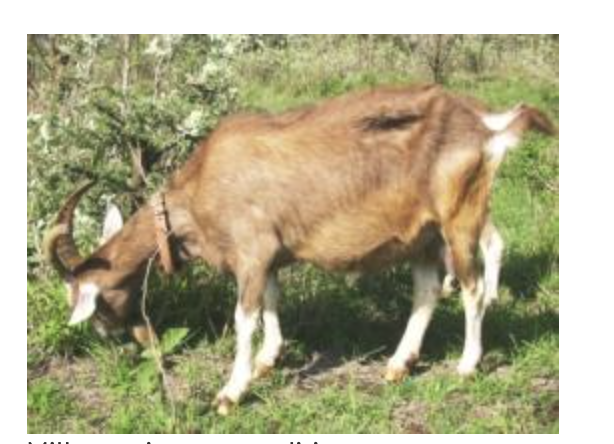
Planned breeding programs yield the best results when the breeder considers the individual production characteristics in goats and how they can be passed on to offspring. The breeder must also be able to match these characteristics to consumer requirements.
Mating systems are descriptions of who mates with whom in the animal world. In simplest terms, definitions of mating systems are based on how many mates an individual acquires during the breeding season. There are two types of mating systems, inbreeding and outbreeding. Unless planned, inbreeding can occur over generations.
Inbreeding is the mating of individuals that are related. In the broad sense, all members of a breed are related. As a result, any seed stock producer is practicing some inbreeding. Therefore, generally the term inbreeding is reserved for the mating of animals that are more closely related than the average of the breed.
Inbreeding can have dramatic effects on a herd. Most animals carry undesirable genes that usually remain hidden unless the animal is inbred. An inbred individual is more likely to express undesirable genes, and hence, undesirable traits. Inbreeding does not create undesirable recessive genes, but it does tend to bring to light these unfavorable genetics. This leads to a decline in average productive performance called inbreeding depression.
Inbreeding is nearly unavoidable in herds since it is frequently difficult to find new breeding stocks that are not, at least partially, related to animals in an existing herd. Care should be taken to keep inbreeding at a fairly low level by avoiding mating of brothers (bucks) with sisters, daughters and granddaughters nor with mother and grandmother. Close mating within small herds or family groups not only produce rapid inbreeding buildup and, hence, depression, but can produce random losses of desirable genes.
If inbreeding builds up, the first economic effect will be fewer offspring available to sell. In addition, the offspring will have poorer performance and will not be as attractive to customers interested in performance. Other complications of inbreeding can include stillbirth, abortion, haircoat abnormalities and malformation.
Inbreeding affects the rate of genetic improvement in several ways. There may be a small increase in heritability (pre-potency: the degree to which a sire or dam will pass his or her characteristics consistently). This is more than counteracted by the decline in selection intensity and loss of genetic variation. Selection intensity is a function of the proportion of sires and dam candidates that are actually selected. Selection will be less intense since more sires and heifers will be needed as replacements, and there will be fewer from which to choose. Furthermore, the variation will be less among the animals since inbreeding reduces intraline genetic variation.
Table: Comparisons of Mating Systems
| Trait | Inbreeding Trait | Outbreeding |
| Uniformity | Good | Poor |
| Fertility | Poor (to good with selection) | Good |
| Growth | Poor ( to good with selection) | Good |
| Predictability | Good | Poor |
| Overall vigor | Poor ( to good with selection) | Good |
| Longevity | Moderate | Good |
Table; Some choices of breeding strategy for different producer goals
| Goal Uniform offspring Supreme show goats Rapid growth meat kids | Inbreeding Good choice with selection Poor in most cases Moderate at best | Outbreeding Good in first cross, then poor Good if non-uniform goats Good to excellent |
N/B: THERE IS NO ROOM FOR PRACTICING INBREEDING IN SMALL-HOLDER FARMING.
Distinct objectives are essential to a breeding plan. The breeder must aim to improve productivity of meat, milk, fibre or skins or some combination of these with the resources of the farm. She or he should not aim at very demanding breeds while the requirements cannot be met in management, including feeding. It is better to aim at an animal that fits the circumstances and keeps healthy than to choose high producing animals that are constantly unbalanced and struggling. The definition of objectives concerning productivity from goats is related to the characteristics of the product and the characteristics of the goat. The latter include the following:
The first 2 characteristics are assessed simultaneously as the weight of kid weaned per unit of feed consumed by does.
Both quantity and quality must go together for efficient production. High growth rate and production of the maximum number of goats for slaughter should be associated with an acceptable distribution of fat i.e., sufficient to improve the quality of the meat but not so much as to have a low consumer preference.
The phenotypic expression of characteristics refers to the physical manifestation of a gene, i.e. the observable trait. Thus the length of ear in a goat is the phenotypic expression of the genes that regulate ear length. The breeder can only plan according to the trait observed. Repeatability and heritability are two kinds of observation that the breeder can use.
Involves repeatability and heritability. This refers to the permanence and constancy of a phenotype from one observation to the next and from parent to offspring respectively.
The genetic quality of goats in East Africa is often low and thus productivity is low. This is partly due to the inadequate identification of productive characteristics in individual breeds that could be exploited and selected for in order to increase productivity. Another reason for genetically low quality and low production is that these “low” demanding goats better fit the farm circumstances. Planned breeding is the exception rather than the norm in most of East Africa. Even where promising characteristics are identified, inadequate selection and the absence of a long term sustained effort mean that breeding practice is poor. Goat breeding in East Africa relies on substitution or modification and/or grading-up.
Substitution refers to the replacement of existing breeds with introduced breeds. This is usually a large scale operation and very expensive. This method is advantageous under the following circumstances:
It is rarely desirable to get rid of the existing population of indigenous goats. Native breeds are well adapted to their environment, have good disease resistance and high fertility. These qualities can be exploited in breeding plans. Large scale introduction is done in order to increase numbers, and to improve the quality of the indigenous breeds. In this way crossbreeds are substituted for the native breeds.
Grading-up is the genetic quality of indigenous breeds is probably the most popular and widely used herd improvement method in East Africa. This involves the importation of an improved breed. This breed is then used to produce increasing proportions of its characteristics in successive generations. It should be noted that there is a number of generations between the first cross and the grade does. The variation in the genotypes produced is quite considerable and necessitates culling to maintain uniformity of the herd.
Grading-up indigenous goats with one or more temperate breeds is common in East Africa. Likewise one or more dairy breeds have been used to grading-up indigenous goats for milk production. Probably the best example of upgraded goats are the indigenous goats of East Africa with imported Swiss and German dairy goats.
It is pointless keeping a buck unless he is going to improve your herd. It takes up the same amount of space and eats the same amount of food as a quality goat. Alternatively, use a “rotation buck” or take your does to a quality buck on another farm.
Objective for improving the herd might include:
Crossbreeding refers to the crossing or mating of two pure breeds, but the term is frequently extended to include the progeny of purebred sires and crossbred females. When two purebreds are used, characteristics of the first cross animal should show:
Crossbreeding of goats is widely practiced throughout East Africa, especially between indigenous goats and Toggenburg and French/German Alpine breeds for improved milk production.
Planned breeding requires an understanding of the characteristics in goats that are transmitted from generation to generation. It concerns the genetics of entire goat populations. One objective of animal breeding is to increase the frequencies of desirable genes so as to achieve the ideal genotype which will give the characteristics required in the population.
In practice, however, breeding for the ideal type is not easily realized. There is tremendous genetic variability inherent in individual breeds of goats. Most of the characteristics that are important to the animal are influenced by other factors as well as by the genes and are, therefore, highly susceptible to mainly environmental factors over which the breeder has no control.
Live weight at a given age, or milk yield per lactation are two traits of economic significance that can be manipulated by use of the quantitative data. Qualitative traits such as presence or absence of horns are also of some importance in animal breeding. In the Saanen breed for example, the gene for polledness is associated with hermaphrodistim and polled goats should be avoided in breeding programs. Horn bucks are generally used.
Puberty in goats as in other farm livestock is the period when the animal becomes sexually mature. It precedes adulthood, and is reached at an age which varies considerably from breed to breed and also among individuals within a breed dependent on the circumstances the animals are raised. In goats, sexual maturity is reached quite early, but mating should be delayed to ensure that the doe is able to accommodate the foetus without having to compete with available nutrients for her own growth.
In S. Africa, it has been demonstrated that puberty in male Boer goats was reached at 157.5 days old (22.5 weeks) and counts of morphologically normal sperms rose from 36.5% to 89.8% in the 8th week.
Natural breeding cannot be accomplished until goats mate and reproduce. Bucks and does, therefore, must be brought together when they are considered to be sufficiently mature. Mating is also conditioned by various environmental factors, including nutritional state, ambient temperature and the use of artificial insemination (AI) (not readily available in East Africa). In bucks, libido or sexual excitement is exceptional high, while does are more passive.
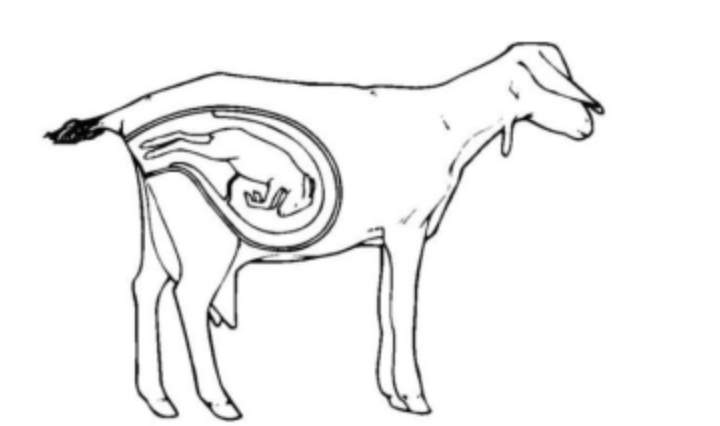
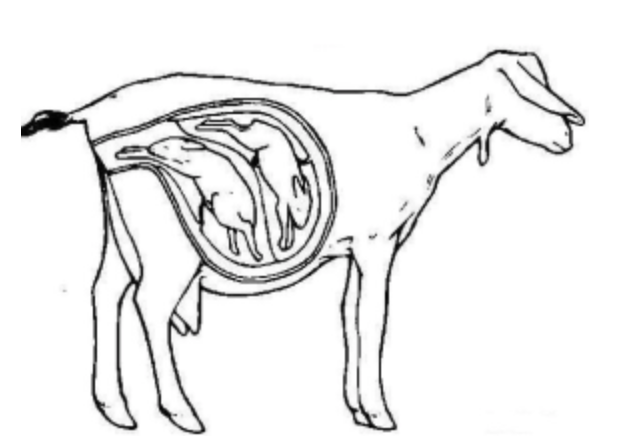
The appearance and method of presentation of the kid determines whether the doe needs any help. Abnormal presentation includes the following:
Whilst birth is a natural process it should be observed carefully since many births are multiple. Note: After delivery watch for the afterbirth. This should be removed and buried or burnt.It is advisable NOT to let the doe eat the afterbirth. A doe in distress must be given time to help herself before she is assisted. It is important to ensure that ALL kids are removed from the womb of the doe.
There are 3 basic rules in successful kidding management:
Male goats are fertile at an early stage and, consequently, it is usual for them to be managed separately. Bucks exude capric and caproic acids in their coat, which can contaminate milking buckets and cause odours in the milk. It is advisable, therefore, to house the bucks separately. The buck must be kept in good condition and fed adequate amounts of feed. An underfed buck will become sluggish. Exercise is important and provision should be made, where possible for them to have access to a yard.
When this is done at weaning it causes least interference. Two types of ear marking are generally practiced:
Other Methods: Paint or ink can be used to mark the side of the animal. This has the disadvantage of not being permanent and of possible damage to the skin. A string or cord bearing a tag can be placed round the neck of the animal but the tags fall off easily, particularly if the string is not of good quality.
Goats are castrated when they are surplus to breeding requirements and destined for slaughter. Castration of male goats eliminates odours in the meat, rendering it more palatable. The following methods of castration are practiced usually at weaning when the animals suffer least.
Credits: Biovision-Infonet
Mortality is highest during the first week of life. Among single births losses tend to be highest among the heavier kids. In twins and multiple births the lighter kid is most susceptible. Weak kids are usually the result of difficult kidding or being allowed to catch cold after birth and or poor feeding of the doe in gestation. Kid mortality can also be caused by milk fever, malpresentation, unsound udders, and death of the doe or accidents. Good management of the new born kid entails the following practices:
1. Tickle the tongue of the kid, this causes coughing by a reflex action which stimulates the respiratory system and clears the airways.
2. Place the kid near the mother who will begin to lick the young. Hold the kid if need be until this is done. If the kid appears to be cold you may have to assist by rubbing with a dry towel or with clean hay or straw.
3. Check the teats of the dam to see that there is sufficient milk. Some does do not produce sufficient milk for some hours. It is essential that the kid sucks colostrums as soon as possible. The first colostrumcontains most antibodies to protect the kids against diseases, the colostrum stimulates the gastrointestinal reflexes, and helps pass the muconium. If the kid has to be fed from a bottle ensure that the bottles and teats are properly sterilised before every feed.
Note: DO NOT be tempted to substitute with cow’s milk if this can be avoided. If it is necessary, dilute the cow’s milk before supplying it to the kids.When the kids are born they have to be managed so that the doe produces milk both for the needs of the kids first and secondary for domestic or commercial purposes (see feeding kids).
Colostrum (the first milk produced by the doe ) important for the kidsAt birth, colostrums is the first food of the new born kids and should be given for 3 days. Colostrum stimulates the alimentary system and confers an initial immunity to disease on the kids. With dairy goats the kids are either bottle or pan fed (not recommended if at all possible). In either case nipples, pans and containers must be thoroughly cleansed before every feed. Lukewarm milk should be fed using 0.9 – 1 litre spread over four feeds. From 4 weeks to weaning the kids should be allowed to feed three times a day. If the kids are separated from the mother it is essential that the farm ensures that they area receiving sufficient milk. Under feeding will result in stunted youngsters who will grow into weak adults.
Colostrum is thick, yellow and custardy in appearance. It is vitally important as it supplies essential minerals, vitamins and antibodies to the newborn kid and acts as a laxative which clears the digestive system of meconium. The first excreta of kids is black (meconium) but changes once milk is digested, and turns yellow. The antibodies in the colostrum can pass the intestinal wall till about 36 h, thereafter it is closed. So it is not only important to supply colostrum but also to do it immediately after the kids are born.
The best results are achieved if kids are left with their mother for at least the first month. In organic farming, the kids must be supplied with goats milk. This will ensure a healthy well grown youngster. If the kid is to be restrained from suckling, where possible do not be tempted to supplement with cows milk. If kids are restrained it is essential that they are allowed to suckle sufficiently at least three times per day to satisfy them in order that their growth is not impaired. In the event of triples, one kid (the smallest) may have to be bottle fed with goat milk from a bottle. The bottles MUST be sterilized between feeds to avoid gastrointestinal infections. If small kids are done properly, their reduced birth weight should be insignificant and they will have caught up with their siblings by three months.
Newborn kids should be fed on colostrum within 4 hours and should be with the doe and allowed to suckle as much as they need. After one week: – kids should be provided with small quantities of good clean feed e.g. sweet potato vines, tree legume leaves or natural tree leaves. Kids should continue with milk for the first three weeks and thereafter be allowed to feed on milk combined with fresh fodder up to 3-4 month. Provide fodder and water to kids all the time to enable them learn to eat gradually. A poor start will affect the future productivity of that kid when it grows up to adult.
Credits: Biovision-Infonet
A breed is a group of domestic animals with a homogeneous appearance, behavior, and other characteristics that distinguish it from other animals of the same species.It is developed as a result of intensive selection of desirable traits within a large heterogeneous population until the selection goal has been achieved, usually after the fourth generation.
| Region | Goat |
| High altitude | Saanen, Toggenburg, East African goats |
| Medium altitude | German Alpine, East African goats Gala, Boer, Toggenburg, Angora |
| Low altitude | East African goats, Gala, Boer |
Andrew G. Marete
A cross bred animal results from the mating of two pure breeds of the same species. Very often this cross has qualities which are better than either of the parents. This phenomenon is called heterosis or hybrid vigour and is widely used in livestock improvement. If more improvement is desired, then “grading-up” should be done. This is a process whereby the cross bred female is continually crossed with the desired male until a synthetic breed is realized
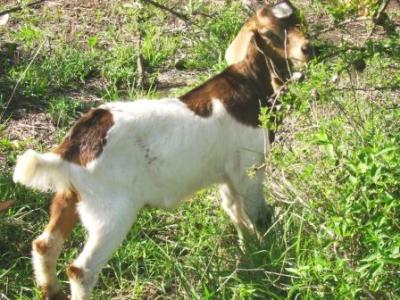
Goats fall into four categories: meat, wool, dairy and dual (multi) purpose. Some goat breeds are dual purpose (e.g. meat and wool, or meat and milk). However, a majority of the current commercial breeds have been developed with specialization to one primary product in mind e.g., milk or dairy.
The meat breeds are produced from many goat breeds including milk goats. Some breeds have been selected specifically for meat production, such as the South African Boer and Galla and East African goats.
When selecting animals, it is important to think about the environment that they are to live in. Many pure bred animals come from Europe, where the climate is cool and good quality fodder plenty. These goats are not usually suited for hot dry areas with little available fodder.
Note: If you are buying milk goats, check the udders to ensure that there is good udder surface and that there are two good teats, and that the teats themselves are not too small. If the udder has small teats, they are very difficult to milk. On a good quality dairy goat the teats should be facing slightly forward for ease of milking.
Breeds such as the East African or the Galla goat have survived for centuries in East Africa with few problems and have good disease resistance. Farmers who want to improve their indigenous breeds by crossing their goats with exotic milk breeds must make sure they have enough good quality fodder and plenty of water available for drinking. Also improved housing for protection from predators and theft at night will help make the enterprise successful.
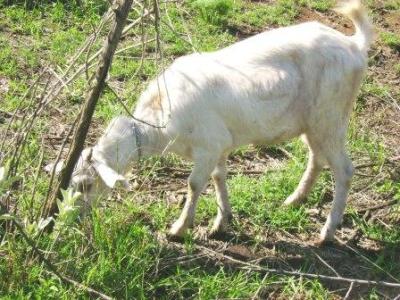
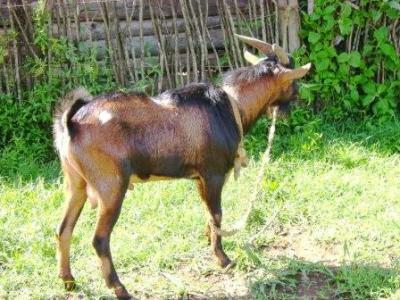
This is one of the most successful domestic goat breeds suitable for
the semi arid lands. They are found all over East Africa from the arid
areas to urban areas. Their colour ranges from pure white to black over a
variety of spotted and reddish brown colours. The males often have a
pronounced mane running the full length of the back. Horns vary from 2.5
cm to 20 cm long. Tassels (sometimes referred to as “toggles”, which
are situated at the top of the neck, behind the jaw) are found in 30% of
the breed.
Body weight: Males up to 35 kg, females 25-30 kg
Sexual maturity is usually reached in 5-6 months, but growth rate is slow. Yearlings seldom weigh more than 20 kg. The average age at first service ranges between 458 to 655 days with a kidding interval of 400 days. They have a kidding rate of 65% with a prolificacy of 0.95-1.10 meaning that they rarely twin. They have a birth weight of 3 kg and a weaning weight of 6.3 kg. They are kept mainly for their meat, as milk production usually is only enough for one single kid. They do have a potential for selection and are useful breeding stock for upgrading breeding. In their present unimproved form their greatest advantage is the ability to survive in almost any environment. Among the valuable characteristics of these goats is a tolerance to heartwater (an endemic tick-borne disease) and worms and possibly other diseases such as mange.
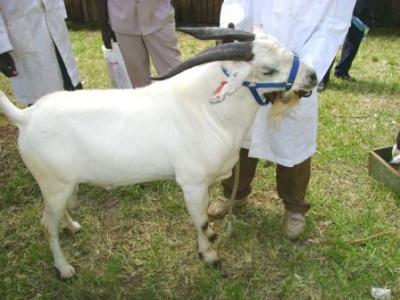
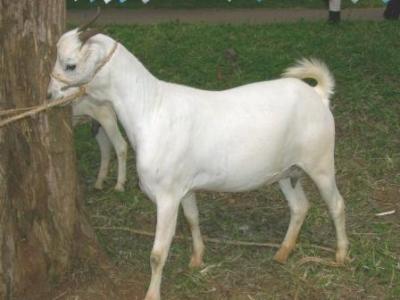
Galla are indigenous to the Northern areas of Kenya. It is also known as the Boran or the Somali goat. They have further been classified into 2 sub types, a short eared medium sized goat called “Degyir” and a larger pure white type called “Degeun”. Adult bucks of the Degeun type can weigh up to 70 kg, while a female will reach a kidded weight of 45-55 kg.
In order for the Galla goat to comply with the Kenya Stud book, all Gallas must be white haired with black skin, nose, feet and under tail.
A third sub type of Galla is kept by the Boran, which has colour around the head and lower legs with a black stripe down the spine. These are reputed to be the best milk yielders of all the Galla type goats. Galla females are long lived and will continue to breed and rear healthy kids up to 10 years of age.
Galla do not like cold wet climates and thrive best in low altitude, preferably in acacia bush country. They have a wonderful high growth rate after prolonged droughts and their larger size enables them to reach browse that the smaller East African goats cannot reach.
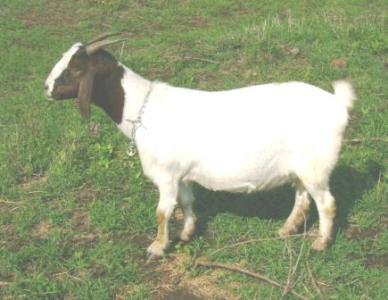

With its origins in South Africa, the Boer goats is a commercial goat with many things in its favour including early maturity, has high average growth and weaning weights, and are prolific non-seasonal breeders. Combined with a high dressing percentage, these goats can produce a good return for investment. Goats reach marketable size at approximately twelve to fourteen weeks of age depending on nutrition and management.
Doe kidding rates are between 120% and 180% however kidding percentages of over 200% are not uncommon. Does have a fertility cycle of between 18 and 21 days and a gestation period of 150 days. Further, since they are not seasonal breeders Boer goats are capable of producing three kiddings in two years under favourable conditions.
It is white with red/brown head and neck, has prominent horns and broad drooping ears. Well muscled and strong boned. They respond well to concentrate feeds. The breed is valued for its meat and milk. Milk yield, however, is relatively low, ca. 0.7 – 1 lit/day. Butter fat 6%.
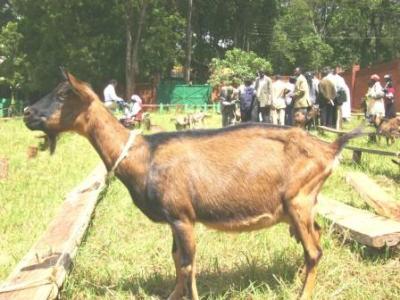
Kenya Alpine dairy goat (KADG) is a breed resulting from the grading-up of the local East African goat using pedigree German Alpine germplasm. This was and is still being done using natural service. The breed has four registration classes (genotypes) which include:
Table; Four registration classes of Kenya Alpine dairy goat
| Genetic Group | Percent German Alpine blood | Crosses |
| Foundation | 75% | Back cross 1 (R1): PAB x F1 Females |
| Intermediate | 87.5% | Back cross 2 (R2): PAB x F2 Females |
| Appendix | 93.75% | Back cross 3 (R3): PAB x R2 Female |
| Pedigree | >93.75% | Interse mating of Back cross 3: R2 Male x R2 Female. Offspring will remain 93.75% or more |
| OR | PAB x R2 Female –>Grading-up. Offspring will be 93.25% or more |
(c) Andrew G. Marete
Studies have shown that as the percent of pedigree blood increases, the goat becomes more prolific producing daily milk yield of 2.4 – 4.6 l when milked twice daily. Under proper management, the goat can come on heat at 8 months of age. However, the average age at first kidding is usually twice or more than this age. The goat comes to heat every 24 days with a gestation period of 150 days.
The KADG is the most promising small stock dairy breed in Kenya since it has been widely accepted in many Counties in Central, Eastern and Western regions; however maximal production is more dependent on the level of management as opposed to the genotype.KADG goat ears are pricked and the hair is long. The goat is medium size. Colour black and brown but considerable variations occur. Horns are scimitar shaped. The adult male weighs 65 kg, female 60 kg. The breed is valued for its milk and meat. Butterfat 3.6%.
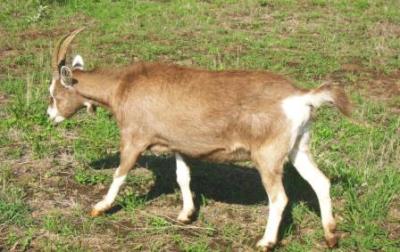
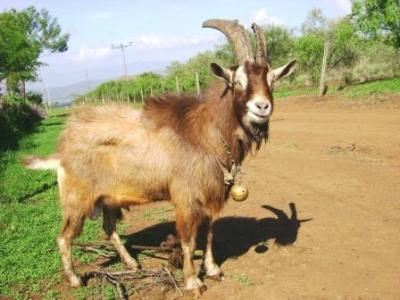
Kenya. It originated from Toggenburg in Switzerland. There are two sub-types of Toggenburg:
The British Toggenburg males weigh up to 100 kg and females about 70 kg.
The Swiss Toggenburg males weigh about 70 kg and the females about 50 kg.
They have an average birth weight of 3.3 kg with a weaning weight of 19 kg and average daily gain of 136 g/day. Studies have shown that the smallholder farmers are able to maintain comparably high levels of milk production in the first three parities, with yields of 475 – 520 l in the first, second and third parity respectively. The kidding interval has a range of 302+-117 days. Studies have demonstrated that the Toggenburg goats are able to perform and thrive reasonably well under the low-input farming conditions.
Colour: brown, chocolate, fawn with white line each side of the face from above the eyes to muzzle, edges of ears, on rump and tail. Legs white from knees down. Males tend to have longer hair than the female.
Suffer from heat stress in hot climates. Do not thrive if badly housed, kept on poor pasture or put away when they are wet. These are ‘high quality animals and should only be kept if conditions are right. For smaller farmers and, particularly, nil grazing situations, cross bred Toggenburgs would be a better option.
Purpose: milk production and cross breeding (improving local breeds). Butter fat 3.8%. Average litter size: 1.8
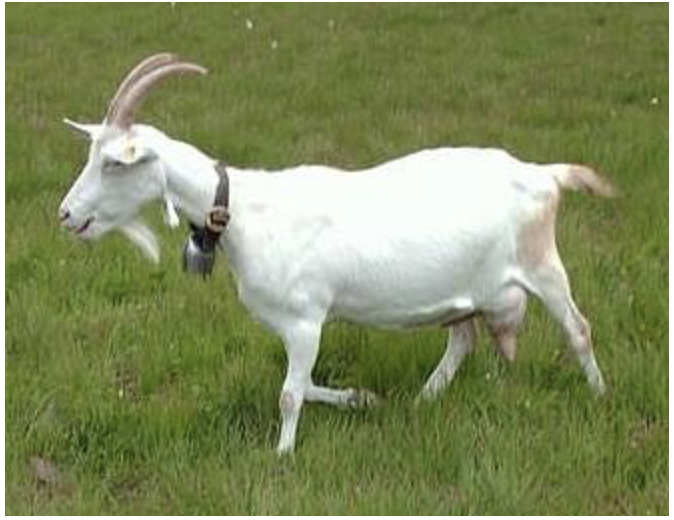
With its origin in West Switzerland, Saanens are the largest and one of the calmest of the dairy breeds. The Saanen breed also produces the most milk on average and tends to have lower butterfat content, about 2.5% – 3%. Estrous cycle length for Saanen goats is 21 days on average, while their average first mating age is 10 months. The age at their first use for breeding (kidding age) is 13 months. Estrous can be seen from 2-5 year olds. The breed is large and white/ biscuit in colour with black spots on nose, ears and udder and with pink skin pigmentation. Ears point forwards and upwards. The conformation is good and udders tend to be very well developed. Short coat. Mostly polled. Sometimes the kids are born with both male and female organs (Hermaphrodism). This is associated with the gene for polledness and it is advisable to only keep horned bucks for breeding. The face is straight and slightly dished. Does do not respond well to strong sunlight and in very hot areas performs best under shade. Mature male weighs 80-100 kg while mature female weighs 60-70 kg and the breed has a high twining rate. Saanen have outward curving horns. Purpose: milk production, up to 3-5 l of milk per day under good management. Butter fat 3.5%.
Unless under specialized management aimed at a defined production goal, most goat breeds are dual purpose breeds.
The KDPG is a synthetic breed resulting from a four way cross of mating two indeginous breeds and two exotic breeds, i.e. Galla X E.Agoat X Toggenburg X Anglo-Nubian. It is mainly used for both milk and meat, thus the name “dual purpose”. The KDPG produces a daily milk yield of about 1.1 kg with peak milk yield occuring on the 7th week after kidding. It constantly produces milk for 4 months. The cross breeds have high twinning rates and faster growth as well as larger body size than the local breeds.
The cross breeds fetch double the price compared to the local goats, due to larger body size and more kids due to high twinning rates. This introduction has led to much higher profits from goat rearing among the farmers undertaking this practice. (Personal communication from R. Muthama, Katumani farmer and Dr. Kariuki, Director, Katumani Research Station, Kenya).
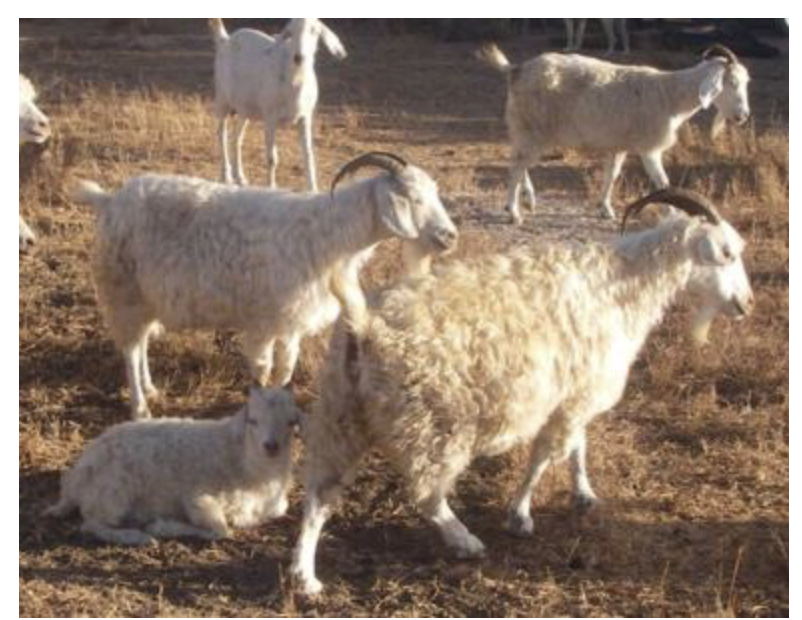
Angoras are the most efficient fiber producing animals on earth, producing up to 25% of their own body weight in fiber annually. It is a small breed, usually white. The haircoat is long with undulating locks and ringlets of fine, silky hair. The top quality fleece of purebreds may be 1-2 lbs, but slightly more in males and wethers. They are bearded. Spring moult is natural and shearing occurs just before. They are not very prolific and twinning is less frequent than in other breeds. Angora goats are not raised for milk production but for fiber.Gestation is 145-150 days. Angoras breed seasonally, usually from August to January. Does are induced into estrus by the presence of a buck and cycle every 19-21 days until pregnant. A full grown buck in good condition can handle between 20 and 45 does; a kid buck will handle substantially fewer, probably no more than 10. When about to breed, the farmer should shear them and delouse and begin increasing their plane of nutrition several weeks in advance of breeding (called flushing). It is especially important that the buck is shorn particularly if it is hot. A shorn buck will be a more vigorous breeder and settle more does on the first attempt. It is also a good idea to worm and trim hooves a few weeks before breeding. Finally, Angora goats grow slowly and most do not reach their full body size until two years of age. For this reason, most does are bred for the first time as yearlings.
Credits: Biovision-Infonet
For good management a farmer should keep the following simple records (Use record sheet for cows).
It is very important to keep breeding records and, where possible, to register the goats with the Kenya Stud Book to avoid inbreeding.
in the absence of a weighing scale the weight of a goat can be estimated by measuring the chest circumference (girth) right behind the front legs.
Figure: Heart girth in cm and the corresponding estimated weight in kilos

Credits: Biovision-Infonet
All over Africa, animals are brought into bomas at night to protect them from theft and predators. These bomas are usually sited near homes where they can be easily supervised. Boma walls are usually made from thorny branches piled in a circle. If possible it is advisable to site the boma
a) under a tree for shade in the mornings and
b) on sloping ground so that urine and rain will not make a mess of all the manure.
If the boma is swept out daily, it can be used for a long time. The manure collected is excellent fertilizer for crops, and can either be put directly on the shamba, or sold to farmers in need of the commodity (see manure and compost).
Advantage of bomas:
This practice of bringing the flock to one point every evening has the advantage that each individual can be checked, and problems dealt with.
Disadvantages:
Zero grazing housing units for goats have been constructed all over the highlands, many of which are very dark, too small and giving the goats no space for exercising or browsing as is their nature.
Goat pens must be well ventilated, but covered and protected from wind and rain, as goats quickly develop coughs and colds if they are housed in damp or drafty pens. Raised houses with slatted floors are the best design and are much easier to manage, keep clean and are more comfortable for the goat.
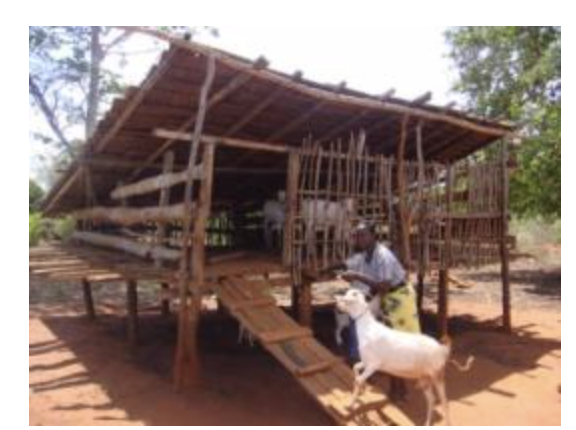
A good goat house should be
The house must be of adequate size for the goat to lie down and walk around. It must also be of adequate size for a doe to be comfortable with her kid for the first month. In zero grazing situations the exercise pen must be big enough for the goat to move around freely and, where there are young stock, there should be obstacles for them to play on; things such as an old tyres, large stones etc can be placed in the kid pens for their play and exercise area. Play and exercise is essential for strong bones and good muscle development. If goats are kept in areas that are too small they will become bored, depressed and it will affect their milk production. Stressed animals are less resistant to diseases and are less productive than happy healthy animals.
Houses should be raised at least 1.5 feet (= 0.5 m or just below knee height) from the ground. A slatted wooden floor is very important. This has small gaps about half an inch wide (or the width of a side of a match box) between the planks or rafters. The gaps must be small enough for the adult goats or kids feet to not go through as this can cause serious injury. Use of local materials means you can use off cut planks, etc. To facilitate the cleaning, goat houses should measure 1,5 m x 1,5m x 1m high
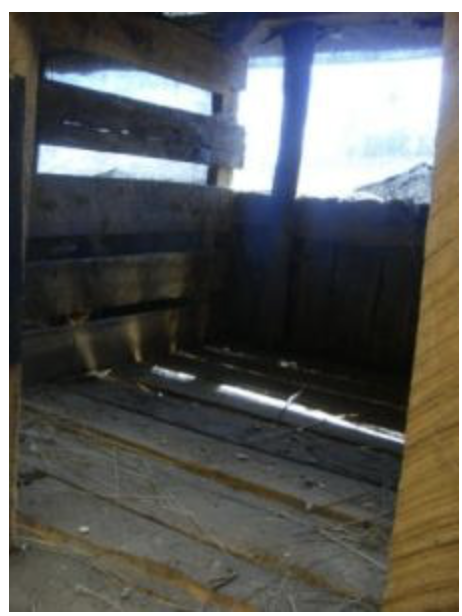
This is the cheapest house to build because it uses local materials such as posts, mud, rafters for floor, nails and grass for thatch roof. When placing mud, make holes in the wall slanting down so that the wind does not land directly on the goats.
This house costs a little more but it lasts longer. Building materials are posts, off-cuts planks, nails, iron sheets or grass for thatching, wood – rafters or planks for the floor.
House Partition (for zero grazing)
There are two main areas of the house, the sleeping area and feeding area. Sleeping area has wall right around with a door. It must be roofed with lots of air being allowed in (i.e. well ventilated). Feeding areas should be open and not roofed, to allow goats to enjoy some sun. It should be fenced right around with a door/gate provided. There is need to provide for feed trough/water area, place for handing fodder (feed racks), floor with slats to let manure fall through to keep feed and animals clean and dry; place to handle mineral block (where it cannot be rained on).
Feed trough. A goat does not like to graze on the ground like a sheep or cow. Goats like feeding at a knee high on the bush or goat house wall. Goats need to be able to drink fresh water at all times.
The feeding area is built 1 meter (3 feet) above the platform with rafters, off-cuts or timber. Troughs must be easy to clean. Floor of trough can be made of off cuts but must be able to hold hay. Feeding space is 35 cm at least per mature goat.
Water Trough. A water trough is placed 1 foot above the floor in the feeding area. Or a 5 litre can is hanged on the outside of the door to the sleeping room. The door should have a small window or a slot so that goats can have access to water day and night.
Kid pen (Zero Grazing). In the case of Toggenburgs and other dairy goats, they often give birth to twin kids so don’t make the pen small. Kid pen should be for at least 6 kids.
Hay barn/store. It is important to store fodder, for use during the dry season. Hay barns are built adjacent to the goat house that is roofed and has a slatted floor to allow air to pass underneath. It is very important that the hay is not allowed to get wet, otherwise it will ‘mould’ and spoil and the goats will not eat it.
Mineral trough
Mineral trough should be made where the goats sleep, 1 foot square box is ideal for this purpose. A halved long plastic container nailed to the board, at least 1 foot wide can be useful. Or just as good – hang the salt so that goat has to reach for it.
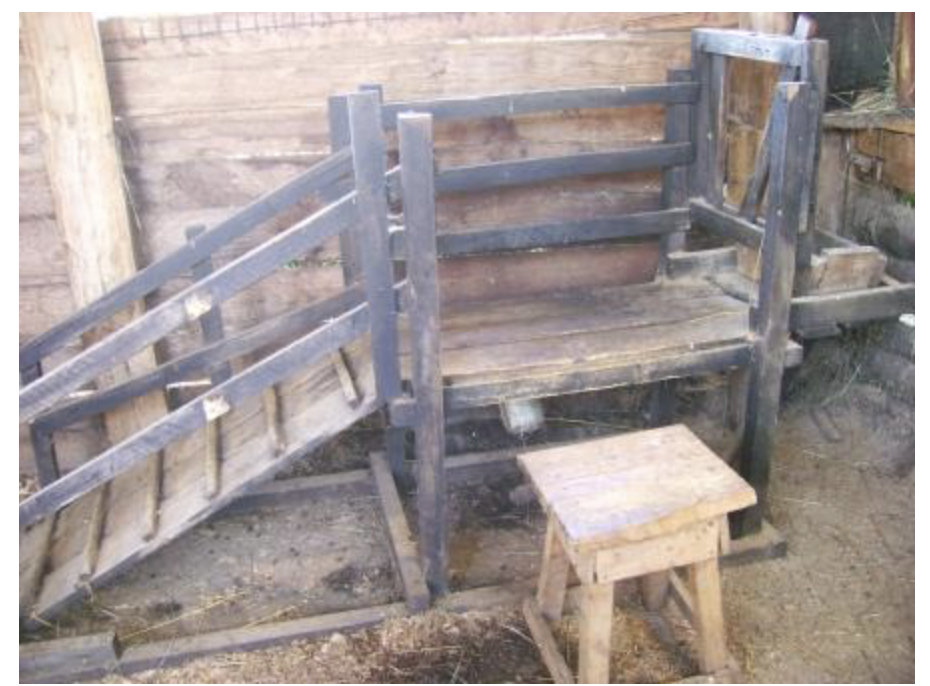
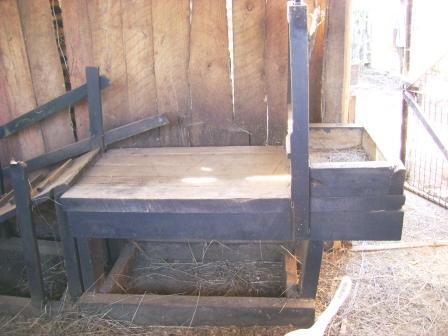
Milking parlour
Make a milking parlour where needed. Before milking clean the udder with a warm, wet cloth. The teats should then be lubricated with milking salve. Goats teats should NEVER be ‘pulled’ when milking. They should be gently squeezed. When you let go the teat will fill with milk ready to be squeezed again. If the teats are pulled the inner membrane will be damaged, resulting in a very painful and/or ‘droopy’ teat. This makes for much less efficient milking and is more difficult for the kid to suck from.
Credit: Biovision-Infonet
Goats are inquisitive feeders and will walk long distances in search of food. Herbage is, therefore, an important par of their diet. This is a difficult requirement to meet in the case of zero grazing. Goats are browsers and eat variety of plants/feeds when left to find their own food. This ensures a balanced diet according to their individual needs. Goats are able to distinguish between bitter, sweet and sour tastes and show a higher tolerance for bitter tasting food than, say, cattle. They relish variety and will not thrive when kept to a single type of feed for any length of time, which is often the case when goats are kept in zero grazing situations. They enand plants. They tend to prefer to nibble at the shoots and leave the stems. Palatability appears not to be their main consideration. They look mainly for a variety of feeds.
The mobile upper lip enables the goat to browse a variety of plants to meet its nutrient requirements and up to 80% of their total intake may be taken as browse. When browse is not available they are, however, quite capable of utilizing grasses and other crop residues. A variety of grasses can be grown suitable for goats. They generally prefer the less coarse grasses such as Napier. Wild legumes are also a beneficial part of the diet.
Goats greatly benefit from a wide variety of tree leaves and make good utilization of woodland vegetation. Like all other animals goats need sufficient feed for:
Goats get bored when fed on the same feed every day. They are clean feeders and will not eat feeds which are not fresh and nor will they eat dirty feed e.g. Napier with mud splash from rain. Goats do not like sticky, mouldy, wet or dusty feeds.Goats need the same balanced ingredients as other creatures, only proportions vary according to the stage in the life cycle:
1. Proteins are needed for growth, production of meat and milk as well as reproduction. Proteins are found in:
2. Energy feeds (carbohydrates
and fats) are needed for maintenance of body condition, fattening, all
body functions, in general for anything to work. Energy feeds are for
example:
Table: Daily requirements of does with body weight of 50 and 70 kg in different stages of production for energy and protein, calcium and phosphorus and for vitamin A and E and the maximum dry matter intake capacity (DMI) of the does.
| Live-weight | Category | DailyGain (g) | DMI | MEM/cal | CrudeProtein(g) | Calciumg | Phosphorusg | Vit AIU |
| 50 | Maintenance and early gestation | 0 | 1.2 | 2.6 | 100 | 4 | 2.8 | 1950 |
| Late gestation | 1.91 | 4.02 | 182 | 6 | 4.2 | 3050 | ||
| Maintenance and growth | 50 | 1.38 | 2.96 | 114 | 5 | 3.5 | 2250 | |
| Maintenance and growth | 150 | 1.74 | 3.68 | 142 | 6 | 4.2 | 2750 | |
| 1 kg of milk, 4.5% fat | 1.9 | 3.86 | 177 | 7 | 4.9 | 5750 | ||
| 2 kg of milk, 4.5% fat | 1.9 | 5.12 | 254 | 10 | 7 | 9550 | ||
| 3 kg of milk, 4.5% fat | 1.9 | 6.38 | 331 | 13 | 9.1 | 13350 | ||
| 70 | Maintenance and early gestation | 0 | 1.7 | 3.4 | 130 | 5 | 3.9 | 2550 |
| Late gestation | 2.41 | 4.82 | 212 | 7 | 5.3 | 3650 | ||
| Maintenance and growth | 50 | 1.88 | 3.76 | 144 | 6 | 4.6 | 2850 | |
| Maintenance and growth | 150 | 2.24 | 4.48 | 172 | 7 | 5.3 | 3350 | |
| 1 kg of milk, 4.5% fat | 2.4 | 4.66 | 207 | 8 | 6 | 6350 | ||
| 2 kg of milk, 4.5% fat | 2.6 | 5.92 | 284 | 11 | 8.1 | 10150 | ||
| 3 kg of milk, 4.5% fat | 2.7 | 7.18 | 361 | 14 | 10.2 | 13950 |
(c) Andrew G. Marete
3. Fibre is needed to keep the rumen (stomach) in a
healthy working condition. Fibre is found in all plant material. Old dry
stems of plants (DO NOT use dry legume hay. The clostridia content of
this is higher than green legume) are almost pure fibre.
Young green
plants have less fibre and more nutrients. Ruminants such as goats can
digest a large amount of fibre, but do need supplements, especially if
all the available fodder has dried out. If goats get too little fibre
they tend to either suffer from bloat or from indigestion (badly
functioning stomach).
4. Molasses added to the
water is much appreciated by goats. This can be given from a large
bucket when the goats come in for milking. They should be allowed to
drink from this freely. Molasses assists with the fermentation process
that takes place in the rumen. Dairy goats carry very little fat, so it
is important that there is good rumen action at night to keep them warm.
Molasses is also an excellent source of vitamins and minerals.
5. Minerals
Minerals
constitute an important part of the diet. Symptoms of mineral
deficiency which, if ignored, could result in death and will definitely
affect production. Minerals are needed for maintaining fertility,
building body condition, keeping body functions healthy. Minerals are
found in weeds, salt licks, etc.Excess in one or more minerals is also
undesirable.
A number of minerals are essential and are classified
into 2 groups – macro and micro elements. The macro minerals include:
calcium, chlorine, phosphorous, potassium, magnesium, sodium &
sulphur. The micro elements which are required in much smaller
quantities are: cobalt, copper, fluorine, iodine, manganese, molybdenum,
selenium and zinc.
There may also be a need for other trace miners
such as barium, bromine, cadmium, chromium, nickel, selenium, silicon,
strontium and tin.
6. Vitamins
Vitamins are
essential food substances and are required in very small quantities.
They are usually classified into 2 groups: fat soluble and water soluble
vitamins.
Most of the above are widely available in feeds and green leafy materials and in cereal grains. Some of the B vitamins are synthesized by the intestine microflora when cobalt is present. A practical way to ensure that vitamins and minerals in the correct amounts are incorporated in the diet is to feed them as supplements. There are many supplements available on the local market.
The amount of feed needed by goats depend on their size and stage of development. As a general rule of thumb, an animal will need 3,5% of its bodyweight daily in the form of dry matter in feed to satisfy its appetite. An animal will produce nothing and eventually die if its appetite is not satisfied. A 40 kg goat will thus need 1.35 kg dry matter per day or almost 500 kg in a year. Most FRESH forage contains about 33 % dry matter as an average. The 40 kg animal will then need 4 kg of fresh forage every day or its equivalent in dry forage and feed, which makes about 1500 kg per year.
The main difference between a goat and a cow or a sheep is that the goat has a much (delete) bigger rumen in comparison to its body size than the other two animals. The rumen of the goat can be as much as 1/3 of the total body volume. This makes the goat a very efficient converter of rough feeds/ browse, but the process uses up a lot of energy and there is also a need for minerals especially phosphorous. One reason goats prefer browse bushes and trees is that these plants are deep rooted and bring up many more essential minerals from deep inside (delete) the soil that the goat needs, than shallow rooted plants do.
Dairy goats are much more discerning browsers than other goats. They will graze, as a herd, on one particular food for a short period of time before moving on to a different plant. They do not, therefore, do nearly so much damage to the environment as other goats and it is rare, even in a drought, to see them strip a tree until they kill it.
In comparison to a cow, a goat
In table 2 the maximum dry matter intake of different categories of goats are given. Also the average requirements for minerals, trace-elements and vitamins are given for those categories. Heavy goats (over 50 kg) have a somewhat higher daily intake and a higher mineral and trace-element need.
Table: Average daily mineral and trace element requirements for different categories of goat
| Category | kgDM | Ca | P | Mg | Na | K | Cl | S | Cu | Co | Mo | J | Zn | Mn | Fe | Se | Bc1 | VitA | VitD2 | VitE |
| g | g | g | g | g | g | g | mg | mg | mg | mg | mg | mg | mg | mg | mg | IU | IU | IU | ||
| young, pregnant | 1.6 | 3.6 | 3 | 1.6 | 0.6 | 7 | 1 | 2.4 | 18.6 | 0.16 | 0.16 | 0.5 | 26.7 | 72 | 100 | 0.23 | 7 | 2800 | 1250 | 38 |
| Pregnant | 1.7 | 3.7 | 3.2 | 1.7 | 0.7 | 7.3 | 1 | 2.55 | 20 | 0.2 | 0.17 | 0.5 | 28 | 68 | 92 | 0.17 | 7 | 2800 | 1250 | 38 |
| 2 kg milk | 2.7 | 6 | 8 | 3 | 2.1 | 17 | 7.4 | 5 | 27 | 0.25 | 0.25 | 0.5 | 60 | 98 | 28 | 0.3 | 30 | 12100 | 2330 | 43 |
| 3 kg milk | 2.7 | 8 | 10 | 3.8 | 2.7 | 21 | 8.6 | 5.4 | 31 | 0.27 | 0.27 | 0.5 | 66 | 108 | 29 | 0.3 | 33 | 13100 | 2630 | 45 |
1) beta-carotene is a precursor of vitamin A and is able to form about 400 units of vitamin A per mg. Plants contain beta- carotene, not vitamin A.
Feeding the dairy
goat after kidding: The doe requires sufficient food to feed her kid and
to maintain her own weight She can be supplemented with at least 200
gm/day of dairy meal. Ration can be reduced to 100gm/dax during the 3rd
month after kidding.
The diary goat gives as much milk as it is given the right food. Some preferred feeds include:
Maize:
While maize is grown for farmer’s food, there is a lot of fodder which can be used for feeding the goat without stopping the Farmer from a good maize yield. Thinning – all the extra maize seedlings that grow from the same seed hole should be thinned and dried a little before feeding to the goats. Remove extra leaves – this should start with the leaves below the cob as soon as the cob can be seen. Cutting the tops – this should start after the grains have hardened. Stovers – these should have sweeteners (molasses) added or sprinkle common salt after chopping. Broken grains – these are very nutritious especially after a heavy harvest but should be fed carefully to avoid grain overload. (Carbohydrate Engorgement) Dry feed intake in the tropics is around 4 – 5% of live weight. Where goats have several functions the intake of dry matter is relatively higher than for dairy goats.
Rolled Barley:
Rolled barley should never make up more than 25% of the ration as too much can be poisonous to goats.
Dairy Meal:
For heavy milkers this should make up 3/4 of the ration with bran added. There are many different varieties on the market, some of which are much superior to others. Make sure that the meal has a pleasant smell and texture.
Silage:
Silage is of little use for goats. Most goats will not eat it. Badly made silage can cause listeria (bacteria) which must be avoided at all costs.
During this period pregnant does are housed in large pens. Towards the end of pregnancy individual does can be confined to pens where the kids are born. Where the floor is made of timber (it should be slatted) or concrete (not recommended) it is advantageous to increase the amount of bedding so that the doe is comfortable.
Table: Recommended feeding for lactating does
| Concentrates 16-18% protein | 0.3-0.8 kg/day |
| Grass with legumes (fresh) | 1.8 – 2.5 kg/day |
| Grass/grass mix (fresh) | 2-3 kg/day |
| Grass/grass mix (dry hay) | 0.7 – 1 kg/day |
| Grass with legume (dry) | 0.6 – 0.8 kg/day |
(c) Andrew G. Marete
The dairy goat has enormous potential for converting roughage as a means of making milk. Her capacity, relative to her size, is far greater than that of a cow. Use should, therefore, be made of this ability to use roughage. A stall fed (zero grazing) milker will astonish the owner for her constant demands for more food. Therefore, good hay is a very important part of her diet. Zero Grazing dairy goats require the same hay and concentrates with added green fodder. The feed requirements of the lactating doe are much greater than it is during pregnancy and the provision of better quality feed during lactation is essential. Feeding during lactation is the primary influence on initial and total milk yield.
Access to water: It is VERY important that the lactating doe has access to plenty of clean drinking water. This is essential for a good milk yield.
Weaning
Weaning can be done at any time up to 6 months. Time of weaning depends on the type of doe. Does reared for meat feed their kids for longer; weaning is delayed and the kids usually run with the doe for 3 months.
Early weaning is more common for dairy does and usually kids are separated after birth. They MUST be allowed to feed on the colostrums for 3 days. It is important that the kids must be allowed sufficient milk to satisfy them in order that good growth is ensured. Maintaining a suitable weaning schedule assumes that there will be control over the breeding animals at all times. In many parts of East Africa, however, especially under extensive management conditions, this is not always possible. More efficient husbandry would improve the system. The kids usually begin to nibble at solid food such as leaves, grasses and dry food at 2 – 3 weeks. This stimulates rumen activity. At this time the kids show increasing activity and they require space for exercise and plenty of access to sunlight.
Water
Water is needed for survival. Lack of water will kill an animal faster than lack of any other food constituent. Goats are efficient water convertors. They have a low rate of water turnover per unit of body weight. Ample quantities of water are essential for high milk production and for maximum growth and mohair production. The water requirements for meat animals, while still essential, are relatively less. The demand for water increases in the dry season when ambient temperatures are highest. Goats pant less than sheep, they do not sweat and lose less water in their feaces and urine. When water intake is low the excretion of urine is reduced. In EA it is thought that tolerance to heat stress is due to the resistance to the absorption of radiant heat by the shiny coat, reduced water loss in urine and faeces and increased ventilation.
Growth Rates
After birth the most rapid gains are during the first 4 – 6 months. High birth weights are, therefore, important. Female Toggenburg kids reach 50% of their mature weight by 4.5 months. By comparison Saanen kids reach 50% of their mature weight by 8 months. It is, therefore, essential that kids management is of a high standard if their full potential is to be reached. Nutrition definitely has a significant effect on the growth performance of growing kids. If light weight kids are managed properly and fed sufficient milk through the first three months, there should be no difference between it and it’s heavier siblings.
A sufficient intake of energy and protein is required for good reproductive performance. This will encourage sexual maturity and conception, and ensures a smooth pregnancy, resulting in kids of high birth weight and strong constitution.
Digestive Efficiency
Goats are efficient digesters of coarse feeds. However, unless concentrate feeds are relatively cheap, and justified by increased milk production, there will be little profit in feeding concentrates. Good quality legume hay such as Alfalfa (lucerne) and pigeon peas are valuable and should be used where possible. When these feeds are not available a concentrate of 16 – 18% crude protein is required, especially when grass is the only ration. Other products such as sweet potato vines, ground nut (peanuts) vines and tree leaves are good fodder.
A list of feeds and the energy, protein and chemical composition is available in Animal nutrition and feed rations.